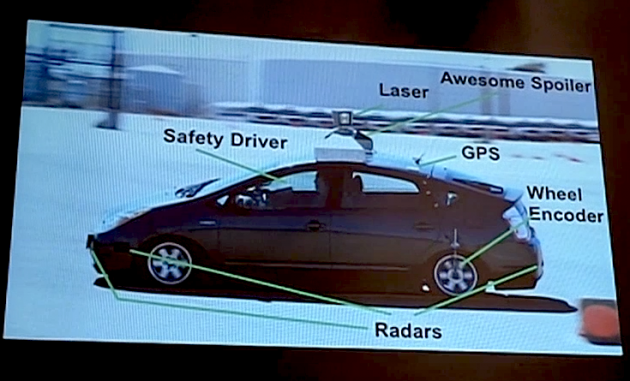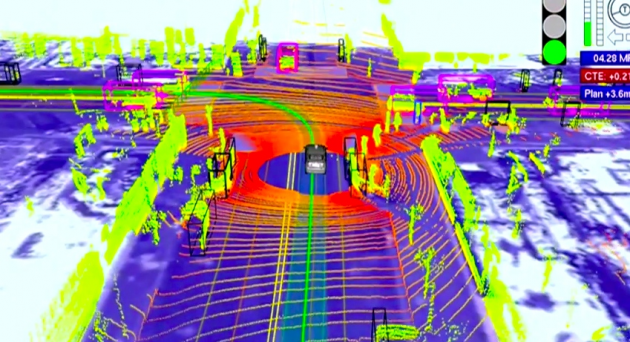Google’s self-drive cars will be on the US streets in 2015
Google is on a mission to bring self-drive cars to the US streets, perhaps as early as 2015. Some engineers at the company have said 2017-2020 is more likely as they work through the technological challenge. In any case, there have been tests run where a Google self-drive car has managed to take a person shopping, drop them off, wait for them, stop at several places along the way and then safely return them home again. The typical weekend run. With no accidents.
Improving Road Safety
The attractions here are several but one of the main ones is that just under 1.25 million people die on the road globally each year according to the World Health Organization; a self-drive car could potentially save lives with the use of smarter technology.
700,000 Miles Driven Without Major Road Accident
So far Google self-drive vehicles have been on the road for 700,000 miles with few problems using different vehicles including the Lexus RX450h model. Human error did cause one accident in 2010 where a test vehicle was waiting at a stop light and another vehicle (driven by a human) ploughed into the back of the Google self-drive car. In August 2011 an accident occurred near the Mountain View headquarters in California but there was a human at the wheel at the time so the on-board computers get a pass.
Ultimately Google is aiming for a completely self-driven vehicle without an ignition, steering wheel or many of the other standard equipment that one would expect to see. Elon Musk, the Tesla CEO, suggested that their own autonomous cars will be available in 2016 but suggested that a completely self-driven vehicle was “a bridge too far.”
Robo-Taxi by Google
Beyond self-drive vehicles for consumers, news reports began to appear in 2013 about a “Robo-Taxi” which would be a modified version of the Google self-drive vehicle to take passengers from A to B safely.
Google had applied for and received a U.S patent granting permission to develop a self-drive advertising fee-funded transportation service. View or participate in advertising within the car and receive a reduced or waived taxi fare in exchange; not unlike the Amazon model with the Kindle e-reader where consumers have a choice of Wi-Fi or cellular connectivity but also whether Amazon-sponsored ads will be shown on the device for a lower initial purchase price for the hardware.
Locations Where Self-Drive Vehicles Can Be Used In The United States
It is not presently possible to ride in a self-drive vehicle in every state across the United States. This is because most laws prohibit a vehicle being driven without a human driver in control. Essentially the motor vehicle and road safety laws were crafted at a time when self-drive cars were only the fodder of movies like “Back to the Future” and many sci-fi novels.
Nevada is the first state where Google successfully lobbied for work on two legislative bills which would allow self-drive vehicles to be on the roads in Las Vegas and elsewhere. There is a side benefit to Nevada because both the Las Vegas Auto Show and the Consumer Electronics Show are presented there, so it would make a good showcase for Google some time in the future when the technology has been perfected.
Technology Behind Self-Drive
It has been difficult to get the interest of car manufacturers with the daunting technological challenges involved in creating a self-drive vehicle. The technology behind the cars also is not cheap coming in at a $150,000 price tag. The technology includes GPS units, lasers, radar, wheel encoder and impressive software.
Road and driving rules have been programmed in order for the car to give way to other drivers where necessary and wait at crossings when pedestrians are still making their way across the road even when the light has already turned green. When crossing at intersections, more aggressive behavior has been programmed in so that the vehicle will offer another driver the right of way, but if they don't take it, then the vehicle will edge forward suggesting that it is about to cross itself. Without this, other drivers would be unaware what the vehicle was about to do at junctions and this could cause accidents due to a lack of human-like behavior while driving.
TED Talk
See this TED talk by Sebastian Thrun about his work on the self-drive project.
Gaps In The Technological Ability
When driving with mapping information, GPS in itself is not accurate enough (only gets within a few meters of accuracy) and the Russian GLONASS is even less accurate. For this reason, both lasers and radar technology is used as well in order to bring the level of accuracy down to fine detail necessary to navigate safely on roads. A driver must run through all the routes necessary in order to map each road quite specifically, right down to driveways, alleyways, stop signs, intersections, passenger crossings, and more. Only after that can the car self-drive on those roads.
No mapping exists to this level of detail currently and even with Google Maps and Google Earth technology this doesn't get specific enough for what is needed with a self-driven vehicle. Google has had to make its own system, and amend hardware and develop software to deliver what it needs.
Current Issues With Self-Drive
The current mapping is not sophisticated enough to distinguish people from vehicles. All are moving (or stationery) objects to the computer. A piece of paper, a piece of trash, a rock or other unknown obstacle cannot be distinguished between something more important. As such, the vehicle will try to go around it. Poor weather conditions like rain or snow can also cause problems with the sensors and cannot be driven through. A policeman directing traffic to stop when the traffic lights are not working properly will not be understood by the vehicle either.
Because of these current unresolved issues with the technology, the Google self-drive team will need continue to work on the technology until all these issues are resolved. In much the same way as the Google Street View, a city or state will need to be completely mapped before a self-drive vehicle can be driven safely on it.
It is currently unclear how the technology even then might handle a home owner who has remodelled their home recently to relocate their driveway or extend its coverage which could result in vehicles reversing from their parking position on to the road and the self-drive vehicle not expecting this because it didn't match the current map or expected outcomes in that moment.
With all that said, it is a fascinating project. Just 10 years ago a self-drive vehicle was taken on a 150 mile course but it could only complete 8 miles of it. Clearly technology has progressed with the might and money of Google behind the effort. We will just have to see how long it takes the company to produce a usable vehicle for consumers to buy at an affordable price which can be ridden in safely.


